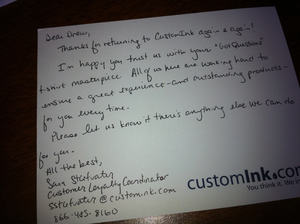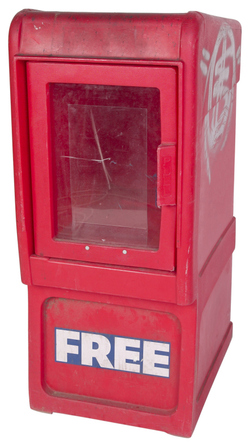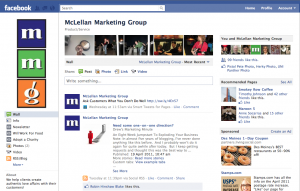You’ve got a bird in your hand. Now what?
August 8, 2011

… Do you value what you already have?
Like the old idiom goes…a bird in the hand is worth two in the bush. I’d argue, when the bird is a customer, the ratio is even greater.
For years, at the risk of preaching, I have been banging on the idea that we spend way too much time and energy chasing after potential customers and way too little time and energy romancing (and creating a love affair) our current customers.
I’ve pushed on the idea that our math is all backwards. It’s cheaper and easier to get more (and more profitable) business from our existing clients — and yet, our “new business” efforts are always aimed at strangers, rather than those friendly, pre-disposed to love us customers.
Which is why I’ve always enjoyed and respected Becky Carroll and her blog Customers Rock. Becky is an Age of Conversation author and a huge believer in the power of treating customers like gold.
So when Becky emailed me and asked if I would read her new book The Hidden Power of Your Customers (click here to buy*) I have to admit — I already knew I would like it. Because I knew it would tout the importance of creating love affairs with your customers.
I just finished it — and wanted to share it with you. As I suspected, Becky spends time making the points that I’ve made above. But the lion’s share of the book is spent showing readers HOW to cultivate and celebrate their current customers. Becky teaches us the how using the acronym ROCK.
R = relevant marketing. This is all about talking to your customers how and when and where they want it. Which, of course, means you need to listen/ask them.
O = orchestrated customer experiences. Brilliant companies are very purposeful in crafting customer experiences that deliver delight and marvel their most valuable clients. It doesn’t happen by accident.
C = customer focused culture. I don’t care how smart or insightful a leader you are — if honoring your customer isn’t baked into your organization’s culture… it won’t happen.
K = killer customer service. This is all about consistency. (as you know, one of the cornerstones to good marketing) When your brand and values are woven into your organization’s culture…. your entire team is able to deliver incredible customer-centric service, regardless of circumstance.
One of the best aspects of this book is the collection of case studies. Becky went beyond the usual suspects and tells tales of customer loving companies like Nicor National, Salon Radius and Sanuk. (Nope, I’d never heard of any of them either!) The fresh stories add a depth that other books are missing. However, no book on treating customers can leave out stories from Disney and you’ll enjoy those as well!
If you want to build an organization that truly treats its current customers as a precious commodity — this book will serve as a valuable guide to making it so.
Check it out and let me know what changes the book inspired.
*Yup, it’s an affiliate link and I was sent a copy of the book by Wiley. However…as you know, I get 4 or 5 books a week. I only recommend the ones I genuinely believe you’ll value and enjoy.
More


















